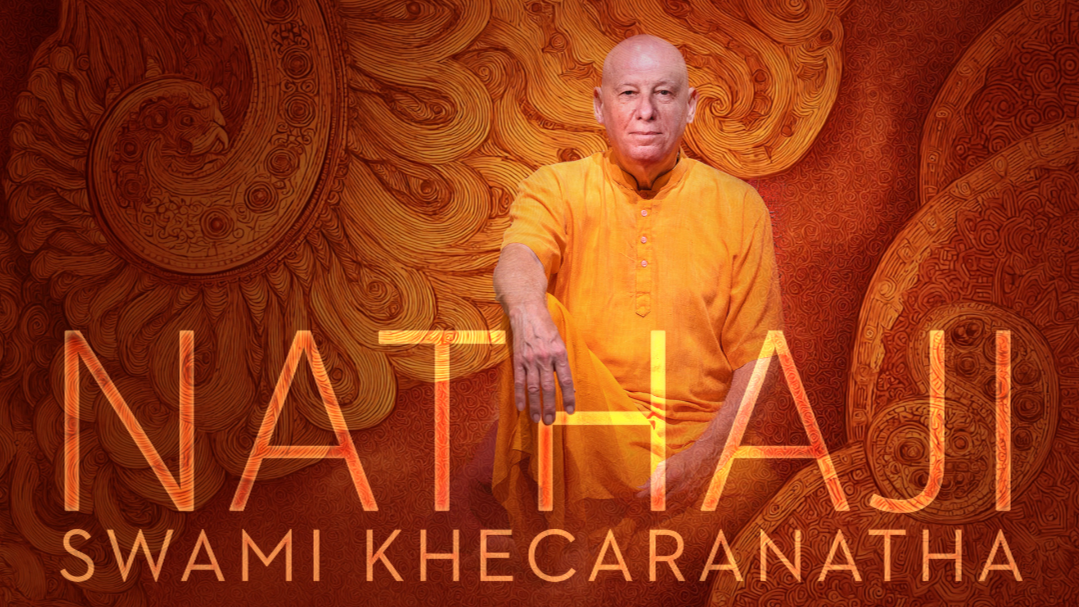
There is a sound that does not travel outward.
It vibrates inward — refining, revealing, returning us to our own essence.
For those who have walked the path of kirtan, there comes a moment when singing ceases to be an offering to someone “out there.” The sound begins to turn back toward its source. What began as devotion becomes dissolution. What began as music becomes Self-remembrance.
The Science of Sacred Sound
In the Indian classical tradition, kirtan is not casual expression. It is a science — a vidya. The ancients understood that the architecture of melody (rāga), the rhythm of time (tāla), and the clarity of pronunciation (uchcharan) are not mere aesthetics — they are technologies of consciousness.
Each frequency awakens a specific current in the subtle body.
Each syllable, when placed with awareness, resonates in precise energetic centers.
Each breath becomes a vehicle for consciousness to expand.
It is through this precision that sound transforms from entertainment to energy, from music to Naad. And yet, all of this structure — every note, every rhythm — is only a vessel. What fills that vessel is bhāv, the interior attitude of being.
When that bhāv is oriented toward performance, sound remains bound to the ego.
When it turns inward, sound becomes a bridge — from form to formlessness.
Beyond Devotion to the Other
We often say we “sing to God.” But the word to implies distance — as if the Divine were somewhere else, listening.
The Sikh Gurus revealed a subtler truth. In Shabad Guru, the vibration is the Guru. The Name (Naam) is not a symbol of the Divine — it is the Divine, vibrating as sound. Thus, when you chant, you are not addressing the Beloved; you are awakening as the Beloved.
Guru Arjan Dev Ji expresses this realization in a shabad that embodies the essence of Naad Yoga:
ਗੋਬਿੰਦ ਗੋਬਿੰਦ ਗੋਬਿੰਦ ਮਾਈ ॥
ਗੋਬਿੰਦ ਗੋਬਿੰਦ ਗੋਬਿੰਦ ਗਾਈ ॥
Gobind Gobind Gobind Maa-ee,
Gobind Gobind Gobind Gaa-ee.
“Gobind, Gobind, Gobind, O Mother —
I sing Gobind, Gobind, Gobind.”
The meaning is not that the devotee sings to Gobind, but that through chanting Gobind, one becomes Gobind.
Each repetition dissolves the boundary between singer and song, between seeker and sought. The vibration of Gobind reconfigures consciousness itself — the chanter merges into the chanted.
This is not metaphor. It is the living science of Naad.
From Sound to Silence
When the orientation of awareness shifts inward, even the outer sound becomes a mirror.
The notes still matter — deeply. The rhythm still carries power. The pronunciation still channels energy precisely. But now these tools no longer serve performance; they serve presence. They refine the vibration until nothing remains but pure awareness humming in its own frequency.
This is the anāhata nāda — the unstruck sound that eternally resounds in the heart.
Through practice, we begin to hear that inner tone behind every note we sing.
Eventually, we recognize: the one singing, the sound sung, and the silence listening — are all the same.
Discipline as Devotion
To sing for the Self does not mean abandoning mastery.
On the contrary, it calls for deeper mastery — not only of the instrument, but of the Self that plays it.
Every nuance of rāga becomes a pathway to stillness.
Every cycle of tāla becomes a meditation on eternity.
Every correct pronunciation (uchcharan) becomes a mantra of precision and grace.
The outer discipline ensures that the sound vibrates truthfully — that no distortion of ego clouds the frequency.
And in that purity, the sound begins to reveal its own source.
Becoming the Sound
When kirtan ripens, there is no singer left. The Naad takes over.
One breathes as rhythm, vibrates as tone, and dissolves into silence as each note completes its arc.
This is not transcendence — it’s embodiment.
The Divine does not descend from above; It awakens from within.
As the shabad says, the endless repetition of “Gobind” does not call God nearer — it reveals that there was never any distance at all.
The Return to Origin
True kirtan is not about losing oneself in ecstasy; it’s about remembering what never was lost.
It is not an act of worship; it is an act of becoming.
Not self-expression, but Self-realization through sound.
When melody and meaning fuse in awareness, the voice becomes a bridge across lifetimes — carrying the soul from individuality to infinity.
“The sound does not reach God.
The sound reveals God within.”
Closing Reflection
So the next time you sit before your harmonium, pause.
Feel the pulse of your heart.
Let the breath settle until the silence beneath it hums.
Then, begin — not to perform, not even to pray.
Begin to remember.
Sing Gobind — until the singer disappears.
Sing until sound and silence are one.
Sing until the chord within strikes itself —
and you awaken as the very music you came here to hear.
Frequently Asked Questions
1. What is kirtan and how is it different from singing music?
Kirtan is devotional call-and-response or group chanting rooted in bhakti traditions. Unlike ordinary music, it isn’t about performance or entertainment — it’s a spiritual practice of remembrance where the act of singing becomes a doorway to the Self.
2. What does “nāda yoga” or the “science of sacred sound” mean?
Nāda yoga is the yogic path of sound — the study and experience of vibration as a means of awakening consciousness. It explores how melody, rhythm, and pronunciation can harmonize inner energy and attune awareness to subtler dimensions of being.
3. How does one practice kirtan as Self-remembrance?
To practice kirtan as Self-remembrance, focus less on how it sounds outwardly and more on the inner experience. Let the breath, tone, and rhythm guide you inward until the separation between singer and sound begins to dissolve.
4. Can chanting actually change consciousness or energy?
Yes. Many traditions recognize that sound influences both body and mind. Chanting regulates the breath, synchronizes brainwaves, and refines awareness. Over time, the vibration of sacred sound can bring the nervous system and heart into coherence.
5. I’m a musician or teacher — how can I integrate Self-remembrance into my kirtan practice?
Begin by honoring discipline — learn the rāga, tāla, and correct pronunciation. Then turn your intention inward. Instead of singing to something, sing from stillness. When the sound is offered without ego, it naturally becomes an act of remembrance.




















